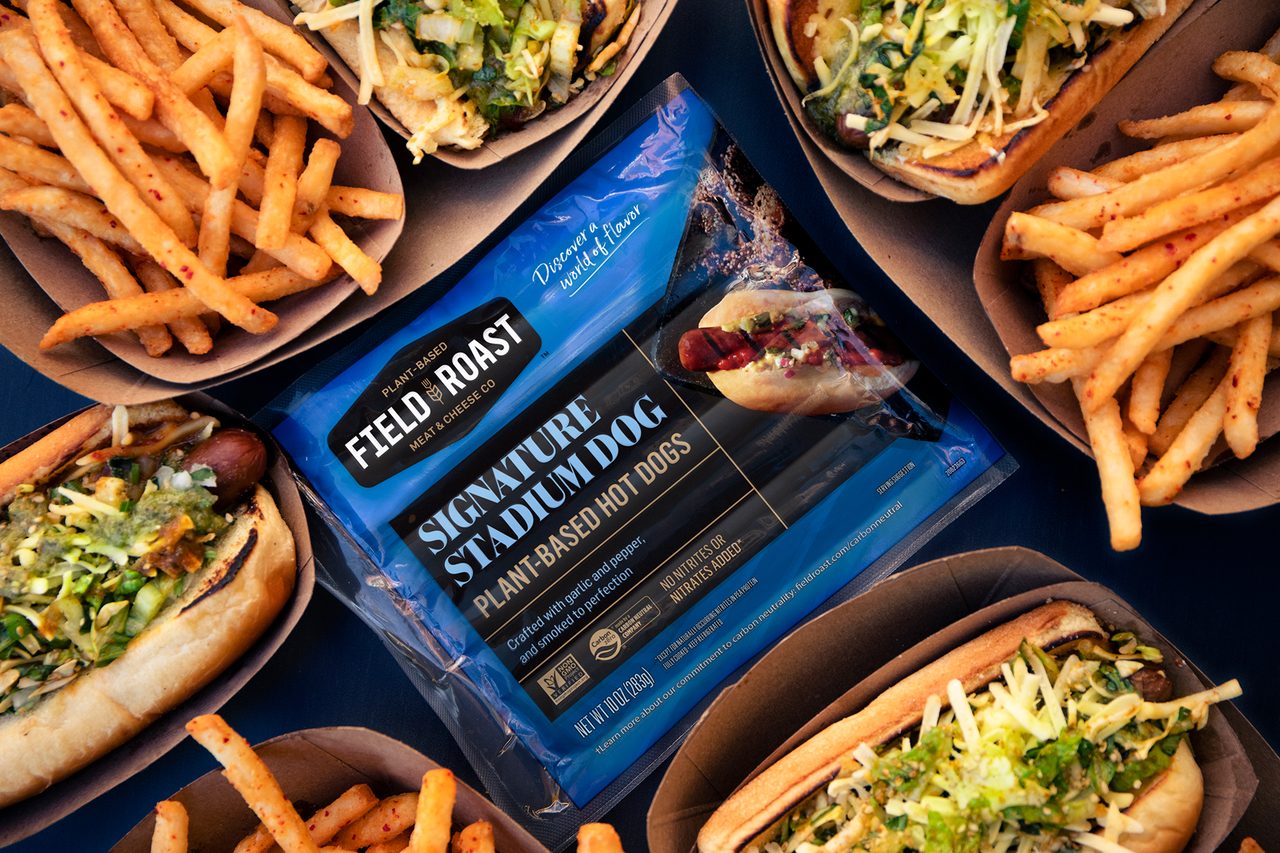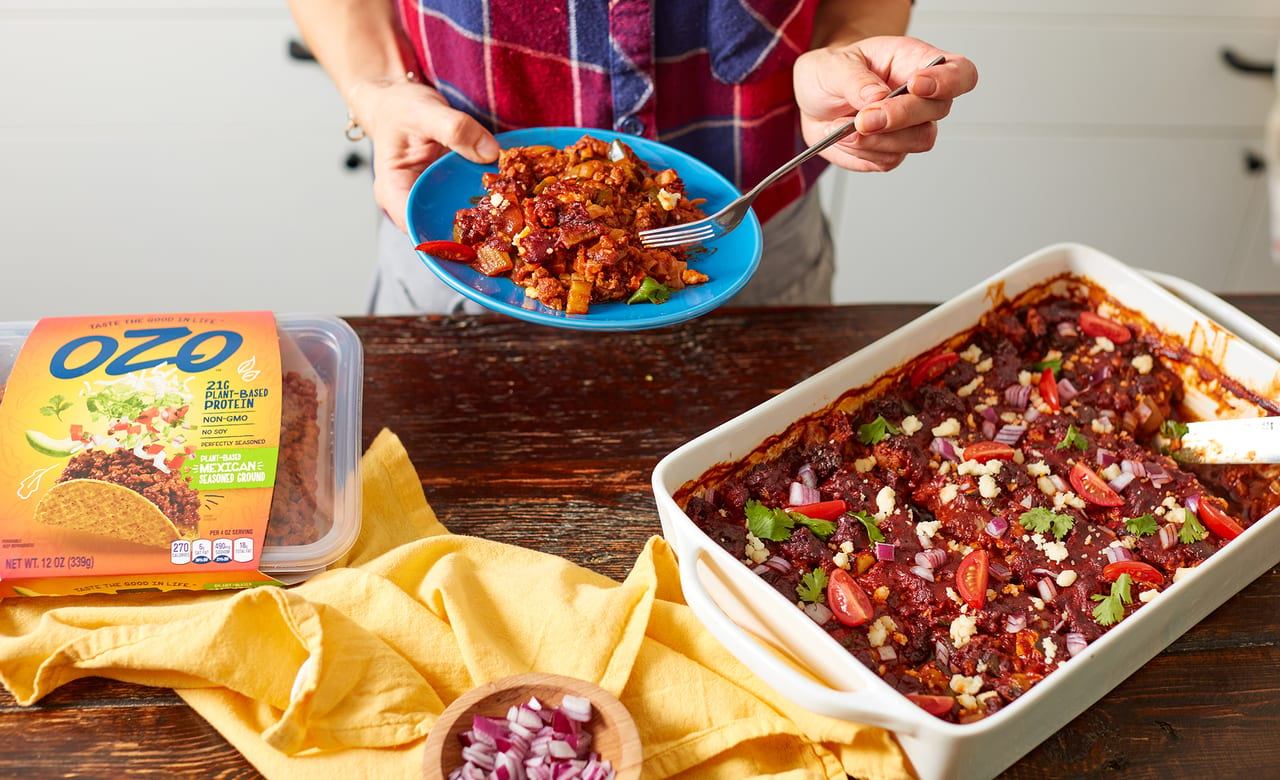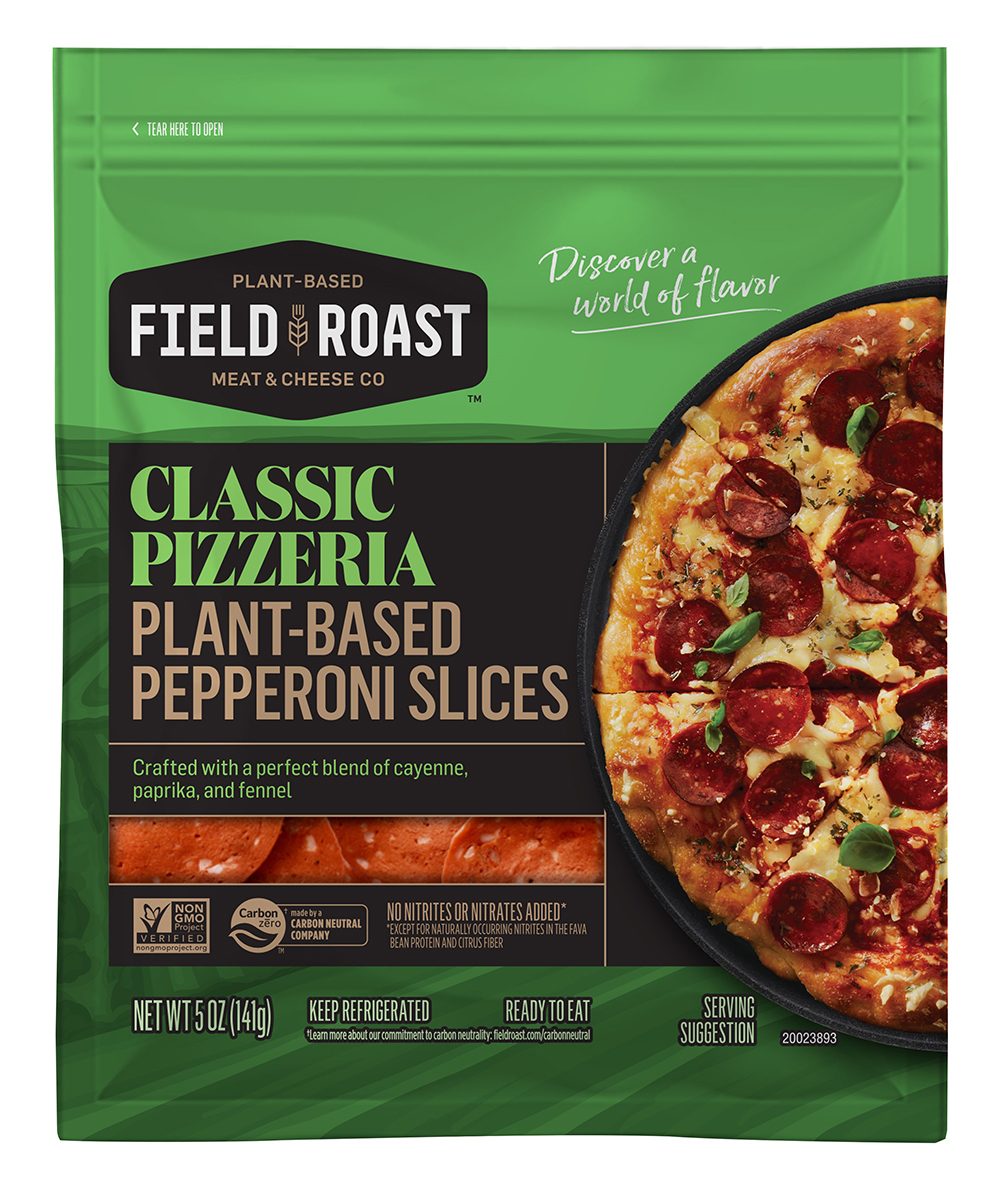plant-based processors
Progress for
New and established alternative protein brands tell us what’s behind their success in 2021
Plant-based foods are ubiquitous in the market today, and at the core of that category is plant-based meats. According to the Plant Based Foods Association, 2020 sales of plant-based meats accounted for $1.4 billion (45.3% year-over-year growth) of the $7 billion plant-based foods industry. Only plant-based milks ($2.5 billion) sold more, and 63% of shoppers who purchased plant-based meats in 2020 were return customers—a sign those products are becoming household staples.
This rapid category growth even has legacy meat manufacturers like Tyson, Smithfield and many others taking notice. As a result, alternative protein brands like Tyson’s Raised & Rooted, and Smithfield’s Pure Farmland, for example, have launched, competing for plant-based dollars with dozens of other established and startup brands.
For a snapshot of how plant-based protein processors are faring in 2021, we checked in with Dan Curtin, president of Greenleaf Foods, which makes well-known brands Lightlife and Field Roast; and Darcey Macken, CEO of newcomer Planterra Foods (founded in 2019), which makes OZO meatless protein products, to see how those companies are navigating this highly competitive category.
(The following interviews have been edited for brevity and clarity.)
Michael Costa, editor-IN-Chief
Lightlife recently partnered with Whole Foods Market to supply the retailer with Lightlife's whole-muscle, pea protein chicken for foodservice use in prepared foods like the plant-based chicken salad above. Photo courtesy of Greenleaf Foods

Field Roast's smoked plant-based Stadium Dog is the first meatless frank to be sold in the fresh meat section of stores, and also the first plant-based hot dog to be made with pea protein instead of soy. Photo courtesy of Greenleaf Foods
FE: How does your company differentiate itself in a crowded plant-based meat marketplace today?
Curtin/Greenleaf Foods: As part of our brand evolution and campaign, Lightlife is committed to prioritizing simple, clean ingredients. We believe the future of plant-based protein is cleaner, nutritionally-superior food that tastes delicious. For example, Lightlife’s newly-reformulated product line was developed with two primary goals: deliver great taste, and use only simple, recognizable ingredients. We succeeded and we’ll continue to refine our ingredients and process to push the category to new heights.
This past year we also introduced new products across our Field Roast and Lightlife brands that are disrupting the plant-based category and reinforcing Greenleaf’s overall commitment to innovation, including Field Roast Plant-Based Pepperoni; Field Roast Stadium Dogs; new flavors of Lightlife tempeh; and a new line of Lightlife plant-based chicken tenders and fillets, breaded and unbreaded.
Macken/Planterra Foods: At Planterra Foods, we’re always monitoring consumer trends. More people today are aware of plant-based protein and are looking for ways to eat it more often, so it’s up to us to provide the best tasting, nutritious food to satisfy consumers so they come back wanting more. With more people entering the category now, great-tasting flavor is not only important, but necessary.
Consumers don’t want to sacrifice great taste for convenience, which we saw firsthand with our OZO Mexican-Seasoned Ground, for example. This has been one of our best-selling items because it’s already seasoned and easy to prepare, taking the stress out of cooking.
Not all plant-based proteins are created equally, and our OZO products are powered by an exclusive proprietary blend of pea and rice protein fermented by shiitake mushrooms, giving consumers the nutritional benefits of plants, including a great source of iron that has been known to aid in muscle growth, weight loss and heart health.

The OZO brand from Planterra Foods differentiates itself from plant-based competitors by incorporating fermented shiitake mushrooms into pea and rice protein. Photo courtesy of Planterra Foods
FE: What is your process for R&D of new plant-based products?
Curtin/Greenleaf Foods: We’re making significant investments to expand our product development and production capabilities to grow the plant-based protein category into what we know it can be, while creating a more sustainable food system and future. For example, Greenleaf is building an 118,000-sq.-ft. production facility in Indianapolis solely to produce Lightlife Tempeh.
Our process for developing new plant-based products starts with thinking through what people are looking for that they cannot currently find in the store. We collaborate internally and with consumers on a broad range of ideas to help prioritize where to focus next in terms of our innovation pipeline. Once we develop a clear idea, we begin prototyping and developing the product—both the food and the packaging—to address that unmet need. We also work fast, typically spending less than a year’s time to get to commercialization.
Macken/Planterra Foods: Planterra Foods recently opened a brand-new R&D Innovation Center at its headquarters in Lafayette, Colo., which will focus on testing and developing new ingredients and product innovations.
Additionally, through a recent agreement with MycoTechnology, a mushroom fermentation solutions company, we are working to accelerate the development of new technologies to improve the quality of plant-based proteins. Our R&D team is working to develop the best possible ingredients to make our food taste great without sacrificing quality. As we continue to develop smarter ways of making healthy foods more enjoyable, we’re also finding ways of making it more sustainable, which is the continuous goal moving forward with future products.

Lightlife recently reformulated 19 of its plant-based products, removing ingredients like carrageenan, eggs and maltodextrin to further its commitment to clean label foods. Photo courtesy of Greenleaf Foods
FE: What kind of sourcing and equipment is necessary for producing your plant-based proteins?
Curtin/Greenleaf Foods: We’re working with key suppliers to help ensure we’re leveraging the right high-quality ingredients to create products we’re proud of and consumers will love.
Both Lightlife and Field Roast brands are developing new chicken products that utilize pea and soy protein to help deliver on different needs for QSR and retail partners. Similar to the rest of our portfolio of products, we believe it’s important to leverage diverse protein sources as we continue to diversify our offerings and keep up with growing consumer demand.
We source our pea protein from both North America—about 90%—and Europe, which positions us to have short, medium and long-term supply of pea protein to produce food products at scale.
Macken/Planterra Foods: Our manufacturing process includes equipment found across the industry, but the processing of our products and the way we manufacture is new and sets us apart from others in the industry.

Field Roast's plant-based pepperoni is the first meatless pepperoni to be made with pea protein and include fat marbling. Photo courtesy of Greenleaf Foods
FE: What role does packaging play in presenting your plant-based proteins as unique to the consumer, while aligning with consumers' expectations of sustainability and recyclability?
Curtin/Greenleaf Foods: Lightlife and Field Roast are on a journey to make a real positive impact on the planet and, as part of the Greenleaf Foods family, are proud to be carbon neutral. Greenleaf’s goals include reducing its environmental footprint by 50% by 2025 and reducing its absolute Scope 1 & 2 carbon emissions 30% by 2030.
Lightlife Plant-Based Burger packaging is 100% recyclable—including the trays and sleeve—and Greenleaf is working toward developing 100% recyclable, reusable and compostable packaging by 2025.
Macken/Planterra Foods: Packaging plays an important role in presenting our unique plant-based products to Planterra Foods consumers. The packaging of OZO products is designed to catch the eye of flexitarians in the grocery store and the packaging provides a high-level overview of what they will be getting out of an OZO product: vegan, non-GMO, made of pea protein, grams of protein and more.
Our team is also passionate about making a positive impact on the planet. Our trays and sleeves are fully recyclable. We are constantly improving our recyclability and trying to reduce our impact on the environment. We’re finding ways to become more sustainable across all processes by offsetting energy and water usage in manufacturing and creating sustainable and circular packaging solutions.
FE: How do you measure the success of a new plant-based product on the market? Is the option open to adjust/reformulate if needed?
Curtin/Greenleaf Foods: Our Field Roast and Lightlife brands each have more robust product offerings than competitors in the space and hold a leading market position in the refrigerated, plant-based protein category. For us, success means helping to nourish a global population in a better, more sustainable and affordable way, using diversified plant-based protein options.
As a result of the growing consumer demand for products with cleaner ingredients they understand, the Lightlife brand announced sweeping changes to its product portfolio. In just over one year, the brand has heavily invested to completely overhaul 19 of its plant-based products, removing ingredients like carrageenan, eggs and maltodextrin, and raising the bar for other brands in the category to do the same.
Lightlife reformulated its portfolio in 2020, and now boasts more vegan-certified and non-GMO plant-based protein products than top competitors. In addition to its traditional meat alternative products, Lightlife produces the #1 selling tempeh in North America, a highly-nutritious food that’s naturally made with just three ingredients.
Lightlife’s reformulated products started rolling onto shelves last summer, including the Lightlife Plant-Based Burger, the hero of the brand’s pea protein-based product line. With 20 grams of protein and only 5 grams of saturated fat, the Lightlife Burger was reformulated to remove modified corn starch, yeast extract and ascorbic acid and only include ingredients consumers know, like pea protein, coconut oil, garlic powder and beet powder.
Macken/Planterra Foods: While we take the sales into consideration when measuring the success of a new product we put on the market, we also pay attention to what consumers have to say about new products and if we are indeed delivering the best experience for them. Plant-based proteins like OZO offer a positive protein solution that doesn’t sacrifice taste or quality. We’re constantly adjusting our formulas and trying new ingredients and flavors. In fact, through our recent partnership with MycoTechnology, we are currently testing new ingredients that will continue to improve our products.
“We source our pea protein from both North America—about 90%—and Europe, which positions us to have short, medium and long-term supply of pea protein to produce food products at scale.”
—Dan Curtin, president, Greenleaf Foods
FE: Overall, how do you keep your ideas fresh in this fast-evolving segment?
Curtin/Greenleaf Foods: Our R&D team is constantly exploring new protein options to discover new ways to bring high-quality protein into our foods. Our approach is both consumer- and customer-centric. Our goal is to put our products in front of consumers in parts of the store where they’re looking for protein. This means we intentionally show up in both the refrigerated and frozen aisles, and we offer a breadth and depth of products in those spaces to deliver the variety consumers seek.
For example, earlier this year, and months ahead of well-known category competitors, Lightlife introduced breaded plant-based chicken tenders and fillets in retail stores, the first breaded plant-based chicken designed to be sold alongside fresh meat at grocers.
The brand also just launched a new unbreaded chicken product debuting exclusively in the prepared foods section at Whole Foods Market. The unbreaded, whole-muscle, plant-based chicken product is made from pea protein and is available at over 500 Whole Foods Market prepared foods departments in the United States and Canada, and will be used in a variety of recipes across Whole Foods’ popular hot bar, cold salad bar, and grab-and-go offerings.
Macken/Planterra Foods: At Planterra Foods, we always listen to what our customers have to say and what they’re looking for in a plant-based food option. We know the market is growing and competition continues to grow, which is great. We’re excited to be part of an industry that is promoting cleaner eating and sustainable habits for the future, and we’re focused on promoting a flexitarian lifestyle to appeal to everyone. We invest in consumer insights to understand the wants and needs of all food lovers as we look to disrupt this category. FE

